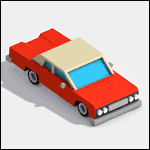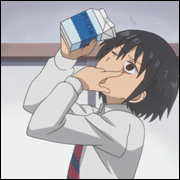|
(Preference - I'm typing all this poo poo down because the last time I did any automotive imagey I realised I had so long ago set up my camera I had no idea what goodamn custom functions I had set up, which is rather annoying trying to work out how to set up a new body and you go..... uhhh.... what the gently caress did I do again?) (Also, no one knows all. No one outside of the basics is a god about how to make auto imagery. Even if people - rightly or wrongly - think your work sucks as long as you are happy with it and see progression... ehhhhhhh it's usually okay if you can tke well intentioned critique. Should have seen the poo poo I first posted. Oh wait, I did post it here and yes it's embarrassing) (Not as embarrrassing as taking headlight shots of Ferraris) (However anyone that puts music over good engine sounds is always wrong and always is a idiot. NO exceptions)  INTRODUCTION This guide and discussion is by no means the be all and end all. There is a lot to learn about filming / photographing cars and the various enviroments / people that surround them - and no one has all the best ways to do it by far. And nor is there just one way or one style that is accepted as best or worthwhile. First question is why would you want to be interested in car imagery? - Want to start a Youtube channel? - Want to photo the local Cars and Coffee? - Like to go to a Show and Shine? - Track days or the variou club events? - Canyon carving? - Getting arty with an exotic car? - Getting filthy at a rally? - Being defeaned at a Top Fuel event? - Dont care just want to take snaps? - Want to be a pro and make money (LOLNO)? The specifics might change and the techniques as well but the basics are all the same. The basics also transfer into any other photgraphy you want to do - understanding what apeture and speed is, ISO, framing, custom functions all apply elsewhere, be it a kids birthday, cat vdeios or a Top Fueller exploding in front of you. A lot of the basics can be read in The Dorkroom which you are encouraged to go read altho the rule of this thread is no question is dumb and anyone telling someone else to google is requested to be hit with week's probation. This thread is about learning from the very good imagery guys - some of who have worked as professionsals or paid assignments. Also no matter how godo and knoweldgeable you are, there is always a new idea or skill to learn / try out. What camera types are there at are good for cars? All of them. Consider this -  Samsung A5 mobile phone camera. Auto functions. It's 16 megapixel, f1.9 rear and front camera. There's is simply no need now for a wildly expensive DSLR body + lens to take clear, good looking walkabout shots. Your standard cameraphone is in fact a GREAT one to just walk about at a car show. So lets start there. (Note - ruggedness and weather proofing are important and each class is assigned a score from from 1 to 10 - 1 being fragile as a racist snowflake up to 10 for these devices are built for warfare and hand to hand combat) a) Smart Phones The cameras and software these days is pretty drat good. Your average iPhone can do amazing poo poo given it's physically tiny sensor and stupid small lens - and leaving them run in auto mode with the software figuring out what to do is lazy I know but it lets you concentrate on framing the shot. Plus, it's easy to carry around. So if you are walking around the pits of a racemeet, dont worry about anything else unless you are specifically looking to do something the smart phone cant do well. Whiiiiich...... actually despite what the manufacturers would claim is in fact a hell of a lot. The zoom on a smartphone is softwore based and will be crap. They arent fast to respond. Their small sensors dont allow much light and thence in low light they tend to suck. Tracking moving subjects? Good luck. However as said as a walkaround? Honestly you cant really go too wrong on that one. And they without any doubt take more than acceptible video. Want to vlog an event? Some do 4K. The sound recording is always compromsied due to tiny mics however, there's no escaping that one. There are lens and mics plus steady / selfie sticks availible to aid recording. Honestly thr latest iPhone / Samsung on the end of a selfie stick makes for a very effective vlogging platform. Combat readiness - **.5 / 10. Tend to be fragile and too light. b) Point and Shoot Point and Shoot cameras are a consumer level camera that tends to be feature limited but with a bigger sensor and lens that a smart phone so somewhat more able to work in a wider variety of conditions. Also with mechanical / digial zooms so you can get a better quality shot from further away - or see more detail closer in. They copy the controls of traditional body cameras and thence are resonably simple to learn and transfer your knowledge to other cameras. Also they tend to be more ergaomic than smart phones to hold and use. The lenses are not interchangable. Most of them these days also take remarkably good video and some of the best ones do it in 4K - these are whats become known as vLogger cameras. Smaller, easy to use, some are quite rugged, quality is right up there as well. Prices vary of course - so here is the thing tho. Point and Shoots have had their market in regards to photos destroyed by smart phones as the truth is they mosty arent that appreciably better. Just dont bother witht he cheaper ones, your average smart phone is 99% of the time just as capable. The more expensive ones do make superb video cameras tho - some limitations but you will be surprised just how good video you can get out of them esp with 4K - so as much as a point and shoot has been bitch slapped for photos, video is a different story. These are often the amateur / vloggers video camera of choice and produce great results. Again, mic inputs can be had for better sound, dont bother with an attachable lens, there's also sticks and platforms to aid vlogging, video and phots. They all tend to have ability to be mounted on tripods and monopods. Combat - ** / 10 to ***.5 / 10. Not great but some are built resonably well for enviroment sealing and can handle being used as a throwing weapon once or twice. c) Interchangeable lens cameras. So you are realising the limitations of your point and shoot or smart phone. Where now? Now we have what I suspect most people really want to talk about because this is where the magic happens and also where your wallet gets destroyed. Now while some might use rangefinders - https://en.wikipedia.org/wiki/Rangefinder_camera - I'd say just dont. Your average smart phone can do a better job unless you are looking for the nth degree of sharpness and BOKEH oh god Im gonna BOOOOOKEHHHhhhhhh... This is one lot of cameras not to bother with espeially considering the eye bleeding price of a Leica. They are camera jewellery. Now there are some other format of interchangeable lens cameras but the two we want to know about are SLR (Single Reflex Light) and Mirrorless. SLR's are the camera body that is by far the most widely used for the top line professionals down to the keen amateurs BUT Mirrorless are it's heir apparent and I would if you have no camera investment to consider, seriously look at this body type. Hell, now with with adapter rings you can put on the biggest and most bad rear end L-Glass or Nikon / Tameron / Sigma equivalent and be safe not having to waste money rebuying the lens collections. https://en.wikipedia.org/wiki/Single-lens_reflex_camera - a DSLR is simply a SLR body that has a digital sensor https://www.digitaltrends.com/photography/what-is-a-mirrorless-camera/ Just to add to the confusion, there are more than one format of both SLR and Mirrorless to consider. - FILM Film is still around and I for one would recommend at least trying to out to learn. Film cameras are unforgiving - you gently caress up, there's no deletion and you wasted your money on the film stock. You also might hear about film being real (LOLWUT), film giving a warmer image (LOLNO), a nicer grain (LOL gently caress off), greater colour depth (HAHAHAHABZZZZZT) or being a great format learn on, only one of these is true and it's the last one. To take images with film, you need to figure out and understand shutter speeds, aperture, light sensitvy (ISO), lighting, depth of field BEFORE pressing the button. The unforgiving nature forces you to think about framing the target, backgrounds etc before exposure. it sounds a but daunting but after a couple of dud rolls it realy does become a rewarding challenge. You most certainly can get a superb image as well that can be blown up to huge sizes for printing without image quality deterioration. Editing the image is somewhat of a challenge of course..... but if you want to go down that route and learn the chemistry and process of film to final image with all the editing in a darkroom, again it's a steep learning curve but one that can be applied to digital. Personally I occasionally use an old Pentax. Frame size is 35mm aka what is now known as full frame. Combat - ******** / 10. Usually made from metal, tough as gently caress, minimal electronics and simple moving parts. Often has sharp edges and other things that bite. - 4/3rds This is a system used by Olympus and Kodak. It is based on an obselete video camera tube size of 4:3 - and if that sounds familiar - yes it is, it's what television images were captured with up to the 1980's and of course 4:3 persists today. These are small sensor cameras that use a 17.3x13mm CCD, resulting in cameras that are remarkably small. The format was purpose built for DSLR and Mirrorless. Because of the sensor size, you can have really small lenses, great colours and great video in HD/4K formats. This system suffers heavily in action and low light, as well as having it's unqiue imagery issues due to ultra short lenses. I persoanlly am not that familiar with this system and it certainly isnt really a popular one for automotive purposes. Combat - *** / 10. Small, light, not usually overly rugged. Most likely will bounce wiht minimal damage if thrown at someone. - APS-C Two versions. Canon uses a 1.6x (22.2x14.8mm) and Nikon / Sony / Pentax / Fuji use 1.5x (23.6x15.7mm). Why the difference, fucknose. By far the largest market segment in interchangeable lens cameras. These tend to be smaller cameras and vary in quality and build - going from plastic and small to the bigger pro featured weather sealed magnsium and titanium range flagships. They also range in features and funtions from the lower end 1000D Canons right up to the xD and comparible full featured prosumer wallet bashers. Okay now up to a few years ago APS-C was your enthusist camera that a well cashed up amateur would have along the lines of the xxD Canon and comparible Dxx Nikon, until Canon introduced the 7D... which while advertised as a prosumer or enthusist camera and priced accordingly actually had not just a lot of features from the full professional line but also unique features of it's own as well as weather sealing to match anything out there, with a full metal body that could take an amazing mount of abuse. Professionals DO use these bodies, they are that good. And today that contines with the 7D mk II and it's equivalent Nikon / Sony competitors actually still being one of the camera to have and also a camera that pros wll not laugh at... as they probably have one. Also, they take any professional lens and use them fully. Video-wise, these cameras go from okay 1080 HD and lovely sound to .... basically pro level features and ability. A Sony or a Canon with an external mic attached produces sizzzling good 4K video with excellent sound, with easy access to whatever your wallet will afford for support equipment like full water box sealing, tripods, steadycam rigs, flashes, remote wifi control, slaving, control over the air via smart phone app or laptop...... yes, you really can have your camera controlled remotely by your phone fully. I've explored this at an event and it's actually quite useful. What camera and features you want? Well, how much money you got? These go from fairly cheap to expensive as gently caress. They also come in DSLR or Mirrorless. Also they come in a variet of sizes, going from lighter and smaller bodies that you may not find hadle well, to the heavier and bigger / better built lines that I personally find handle and feel a lot nice to use. Selected second hand APS-C cameras are a great second hand option, especially the prosumers. Combat - **** / 10 for the xxxxD and comparible plastic lighter build lines, ******** / 10 to ********* / 10 for well built prosumer, ********** / 10 7D mk II as it's weather sealing and heaviness of build make it one of the most indestructible cameras ever made. Swing this fucker by the strap and whoever you want to brain with it will stay brained. - APS-H Unique to Canon format, Larger than the APS-C, the APS-H was found in the professional line of 1D cameras Canon produced. This was the "sports" format when full frame wasnt able to get close to the images per second of a APS-C. It was a drat good comprise - loving fast with amazing image quality that allowed for more light to get to the CCD. 28.7x19mm. Any camera with this format is to this day a formidible second hand option, they are full featured, fully weather sealed, big, amazing ergonomics with things like twin card slots well beore they got to APS-C. Dual processors make them absolutly fly. The Camon Mk III was known to have focus issues, if you get one of those check to make sure it was fixed or an unaffected build. Combat - ******** /10 to *********.5 / 10 - Big. Heavy. Tough. Use as catapult loads or as a mace. Also these big fuckers say you mean business and get you access. - Full Frame Want the best images? Here you go, full frame is where ultimate quality of image is at. Up to a few years ago, full frame (aka 35mm or 36x24mm) was too much data to be able to process fast enough and hence were limited to 3-4 frames a second. In a place where speed counts, full frame didnt cut it. HOWEVER..... with dual processors and more powerful CPU's, full frame is now as fast or faster than APS-C or APS-H in pro models. Also this is what camera your dentist owns. Okay so you do have more enthusist level full frames like the 6D, you also have a prosumer level but HERE is what most pros use and for good reason. Modern full frame pro cameras are really godawful fast to focus, they take 14-20 images a second, they use pro lens to the max, they have huge buffer sizes and massive files. They are also (apart from the 7D mk II), the most robust, water proof and damage proof cameras possible. DSLR pro bodies like the 1D and D5 are rated at the 300,000 shutter actuations and can run reliably for far more - it's not uncommon for pros to hammer these things to the million actuation mark. The Nikon D850 is a wonder. Sony have the A9 mirrorless series that does 20(!) images a second and is directly aimed at making mirrorless a thing in pro level sports use. This si what I referred to with mirrorless being the future - the A9 is a true option. Oh and yeah, they do video. As I understand, the A9's video is best of them all. Combat - ******** / 10 for the smaller and less well sealed mirrorless bodies, *********.5 / 10 for the big fuckoff 1D and D5 head crushers that are the .50 cal of the camera world for destruction potential. LENSES This probably could take up a post by itself so I'm skim for the moment. You might have the best camera, you might have the skills and access, but if you have a weedy plastic kit lens you aint gonna take poo poo. This is where Interchangeable lens cameras really come into their own - you might not have the best camera body but it honestly doenst matter as this is where almost anyone who hasnt had their head bashed in by a 7D mk II recommends you spend your money - Get the best lens you can afford. The results are worth it. Basically, lens quality has three elvels that reflect the camera levels - cheap kit lens that are plastic and dont have the best optics or focusing, mid level semi metal with more eleements and general all round build and then the perfect compliment to a good D5 or 1D for savagely beating a zombie to mush - the pro level full metal class that cost a godawful amount of money and are still worth every cent. These things are tough, heavy, mutli element that let in lots lof light and are FAST to focus. The best come with multimode stabilization and autofocus. ------- Thats a decent start for now - a couple of things I will post about coming up is as follows - a) Lenses in depth b) Suggested howtos to take images in certain situations c) It's all about access and why you aint gonna make a full time job from just automotive imagery anymore. Hell, not even Mighty Car Mods can do this full time and they are are about as successful as anyone ever has been putting out content. Even someone like Garrett @ 1320video aka Cleetus Macfarland has specifically said he does other things to pay the bills, despite having one of the biggest car vlogs out there. d) There are days where there's quite some stories to tell about journalists and motor racing. e) Travelling with camera equipent and why having a gun in the USA really helps if you are flying with big dollar equipment ----- Also remember that much of this is my perssonal opinion and experience. I am by no means the be all and end all of knowledge. I use Canon bodies and glass, I have only used occasionally Nikon and Sony. Please, if anyone else has things they want to talk about, drop a post in. If you have photos you want to show off, please show them off no matter the quality. Videos? Apart from the no music over good engine noise, show off your work! Questions, topics you want discussed etc. As for my history - I'm not a professional, altho I regularly do earn money off this. I've been published several times, I have done as a result work for hire on weekends for magazines and newspapers / motorsport teams. I currently do work for two agencies on weekends in other photographic fields - TBH I'm lucky in that I've managed to bag some cash for something I would have done as a hobby anyway. My automotive image expertise tends to be what I am most interested in and that's rally, altho I do also do tarmac events. There are others on this forum who HAVE made a living from automotive imagery and who have specialised in other motorsport areas like NASCAR or Indycar. 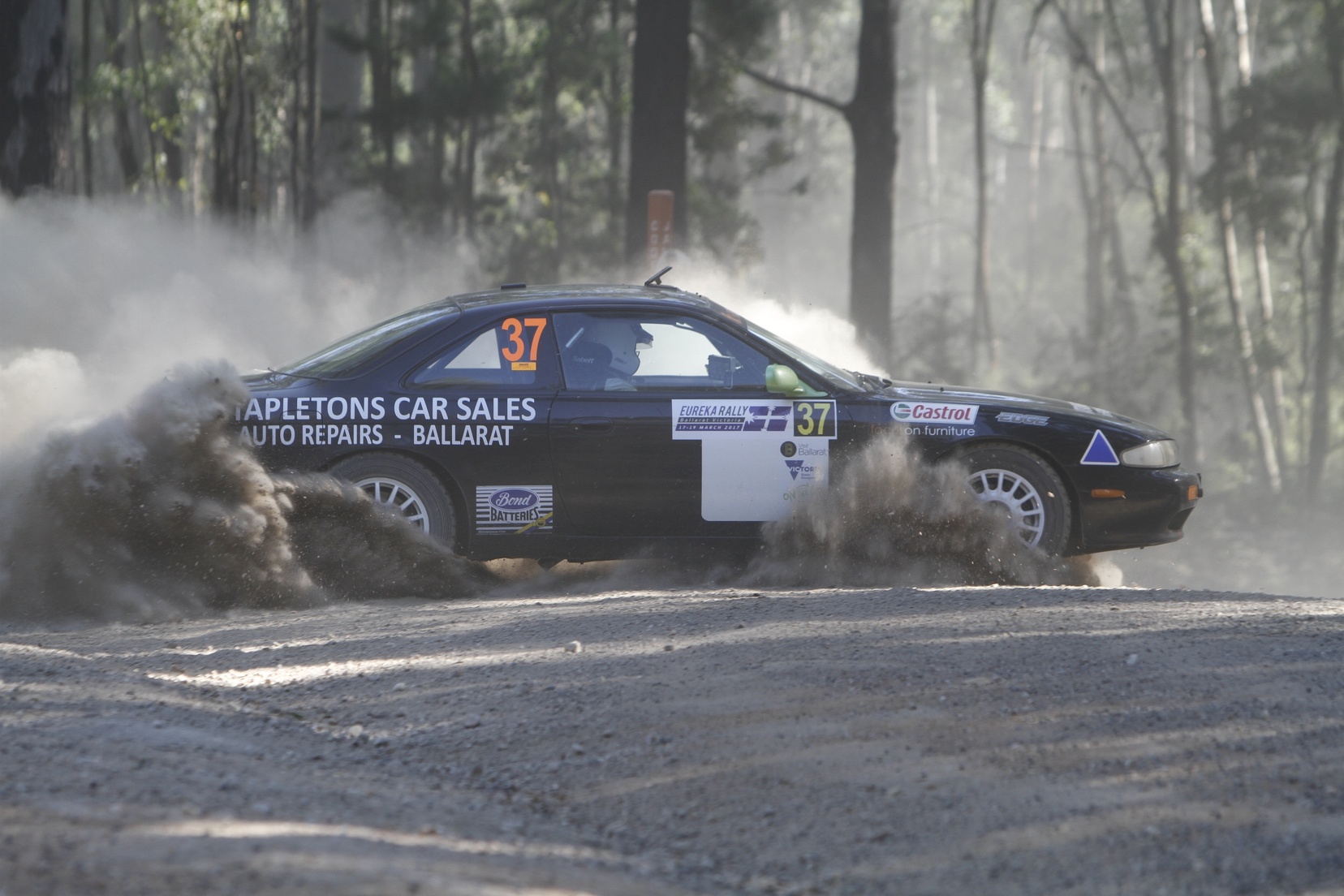 I'll leave you with an image I'm actually pretty sure most people have seen - one out of the series I took in 2013 at The Mineshaft in Canberra. There was two people that caught this crash on camera - my pictures went viral online and reshared over a million times, other other guy got published in the trade magazines. http://alliancemotorsport.org/gallery/v/Marcus/Motorsport/2013/ROC+2013/ (And despite how widely seen that was, it's not the one I think is my best.... THAT came a couple of weeks later) CAT INTERCEPTOR fucked around with this message at 13:48 on Nov 6, 2018 |
|
|
|

|
| # ? May 7, 2024 08:52 |
|
Excellent effortpost, terrist. You and I don't see most things the same, but cameras and bikes? I may insert my poo poo in here too, if you don't mind. I think playing with 10 year old high-end cameras is an unexplored niche... due to all the things you said above. I posted a thread in the dorkroom, but I think I'm going to ask to have it gassed, since that place is just about dead and doesn't like cameras. In your full frame summary, you missed that people are starting to actively search for the original 5D, saying that it has a feel to its pictures that no other camera has had since. Plus... it's cheap.
|
|
|
|
meatpimp posted:I may insert my poo poo in here too, if you don't mind. I think playing with 10 year old high-end cameras is an unexplored niche... due to all the things you said above. Go right ahead. quote:In your full frame summary, you missed that people are starting to actively search for the original 5D, saying that it has a feel to its pictures that no other camera has had since. Plus... it's cheap. Agreed. Older prosumer and pro bodies shoud not be ignored at all. Let alone I want to find a Canon 1D from the APS-H era because those things are still amazing to use.
|
|
|
|
I did motorsports/sports photography for a living ages ago, but I could dig up some of my old shots and give some advice on what not to do  Here's a few I have on the hard drive, most of my stuff is saved on DVDs tho. My setup at the time (around 2003) was two 20D's, one with a 70-200, and the other with a 10-22.    
Applebees Appetizer fucked around with this message at 14:27 on Nov 6, 2018 |
|
|
|
 AI Secret Santa is up! AI Secret Santa is up! 
|
|
|
|
I am by no means great (or even very good), nor do I get much opportunity to photo them thar horseless carriages. But I've certainly got stuff from over the years as digital tech has progressed. Have some photos of stationary vehicles. We'll start with a shot of my first car taken from an old canon Powershot (point and shoot from before cell phone cameras were in the >4 MP range):  To my first new car, taken not long before I sold it. Photo taken with a cell phone camera within the past couple of years:  To more recent and hopefully reasonable photo from the last 2 or 3 years using a canon t5i with a sigma 30mm f1.4 lens:  I hope you enjoy my terrible pictures. A good topic for here as well: a lot of the "better" images get touched in post processing - aka editing the image to give it that extra pop/wow factor. I have never really explored that arena since I never really had the time. My images are, at most, cropped for size. Editing/post processing is a tool, don't let it be your crutch to get a good image. Get the image you want first, and then tweak it to make it better.
|
|
|
|
I went to the Grand Prix on Belle Isle (Detroit) last year with my Pentax K-5 iis with a Pentax 18-135mm. I know nothing about photography and I just rely on putting everything on auto jpg and use it as a point and shoot. My intention is to learn how to use it properly and shoot raw and edit. It was a lot of fun and next time I go to a race my goal is to explore the track more to find some good places to shoot from. It was very sunny during qualifying  May have accidentally wandered into the paddock area     what goes up...  ...must come down 
|
|
|
|
LENSES First rule of a lens - Buy the best you can afford. You can cheap out on the camera body or go second hand but a good lens WILL more than offset. You can have say an old Canon 40D and with the latest lens produce some amazing imagery. On the other hand, you can have the proest of pro cameras and be a fantastic image producer but if you cant afford more than a cheap kit lens.... well it's gonna look like poo poo. Now while the OP was kinda vague with recommendations and hedging, this is a hard and fixed rule that applies to ANY camera system, ANY manufacturer or ANY format for ANY purpose. Live by this rule and it will not let you down. Also another good rule - if you are using a smart device or a point and shoot, attachable / covering lenses are almost always a money wasting gimmick. Doesnt matter if they have ZEISS or LEICA written clearly on them, they will do basically gently caress all or actively make your imagery worse. And to be quite honest here - some of these gimmick lenses are the cost of an interchangeable lens camera. You know what to do. With that said, where do we begin with lenses? Well what exactly IS a lens? Instead of writing a bunch, I'm going to quote Wikipedia - https://en.wikipedia.org/wiki/Camera_lens quote:A camera lens (also known as photographic lens or photographic objective) is an optical lens or assembly of lenses used in conjunction with a camera body and mechanism to make images of objects either on photographic film or on other media capable of storing an image chemically or electronically. Just like camera bodies there is a long list of vaiations - types, constructions, element numbers, brands, terminologies annnd the list really does go on. Also as per camera bodies, some are combat ready. Others are like bringing a twig to a club fight. Lets have a bit of a look at types first, starting with the ones we ypically DONT need up to the ones you are going to have welded to your camera. - TILT SHIFT Tilt–shift is a lens that can move the body in two planes of movement independantly of the camera. Produces some interesting effects and depth of field changes but frankly.... I have never ever seen one in use. Keep it at home if you have one unless you have a specific idea you want to shoot. Combat - 0/10 you left it at home -MACRO These lens are usually for taking photos ultra close to the subject. Good for really small objects like the dick of a FIA scrutineer. Other than that, loving useless near a car. Combat - who cares -PRIMES Primes are lenses that have one focal length. You wan to frame a subject better? Zoom with your feet. Smaller primes tend to be a PITA to use while larger primes take some forethought to position. Honestly not too useful in general but if you absolutly want to take pictures or video at one specific location with not much change in focal length required...... these are completely the best lenses for that circumstance. They also range from the cheap as poo poo f1.8 50mm to some truly gobsmacking prices for the larger primes that are over 300mm. The build quality is also proportinate to the price, with the el cheapos being flimsy and crap right up to dear god weapon of of war Combat - seperate rating will be given for various Primes. (I have a f1.8 50mm wasting space in my bag) - WIDE ANGLE Okay well its rare you see wide angle at an event but thats not to say they arent useful. A wide angle lens gives you - of course - a wider field of view so these are really good for taking in a full pit or carpark / crowd. Or even a REALLY close action shot. They are a good thing to use in a kit but dont expect to use them too much. Still, a good thing to have. These tend to start as good lenses interestingly enough and usually well built due to being a speciality lens - even the cheaply built 10-22 EF-S wide angle produces good images. You wont use it often but when you do, it'll produce.  Combat - ****** / 10. Pretty good in the main but they arent that heavy built. -FISH EYE Another even more speciality lens. These are an ultra wide angle lens meant to produce (of course) the fish-eye effect  Again like the wide angle, being a speciality lens they tend to be decent quality and decently steep price. It's a trick shot lens that is worth learning to use for what are usualyl unique images both photo and video. I'd kinda think this is a lens for more advanced creators and for most readers...... this one is def a save money and get it used. Combat - *******.5 / 10 - Has a lot of glass and metal, well built across the board mainly. -ZOOM A adjustible focal length lnes, usually by the means of making the body longer. These typically have focal lengths that range from say 17mm to .... well... 150-200mm. There is a lot of variety and some can go as far as 300mm while starting at something like 50mm. This is your walkaround workhorse lenses and can even be used with action. Given that zoom lenses are usually the lenses you get with kits, some are really REALLY goddamn cheap and nasty. As per anything in photography and video of course there are levels - kit lenses are the bottom tier crap. You are gonna want to replace the kit lens and sell it to someone else and buy something better. You then have the higher end kit lenses taht arent too bad (They come with the prosumer kits), the enthusist / prosumer level and of course the full blown pro levels. Anything that is f2.8 is going to be big and GOOD but of course expensive. A step down is the f4 prosumers and they are def worth sending the money on. A focal length of 24-70 or 24-104 is very usable and availible in whatever you can afford. I'd go for a prosumer (f4) rahter than pro (f2.8) - REOMMENDED TO BE IN YOUR KIT Combat - 0 /10 for the worst kit lens to ******** / 10 for the pro leve f2.8's that are built to bash and get wet (I have a 55-250 kit lens off the 40D with is a sad fuckign joke, a 18-135 kit lens off a 7D kit which is actually quite decent and a 24-104 f4 IS USM L-Glass which is a fantastic lens. Get this or it's equivalent in the Nikon / Sony lines) - TELEPHOTO I'm not going to make any bones of this. Telephotos are your payday lenses. They are your workhorses. You will be using them everywhere, all the time, in any conditions so this is the lens to really do your research on and buy. Dont skimp.... which in the main you wont have a lot of choice anyway as the lens manufacturers are quite well aware this is their money makers. and this is where they put all the features with all the pretty paints, lenses and lens coatings, lens modes, tripod mounts and god knows what else to entice every cent from your wallet. These lenses are the ones the pros most use so you bet they focus fast, they are tough and they let in a shitload of light to really make the best images. Telephotos are often so good they are used as portrait / studio lenses and used by pro video makers.  It is actually quite a thing that a person will settle on a camera system just based on what they think of a 70-200mm telephoto from a manufacturer - and yes that the focal length you are most interested in. f4 or f2.8 is a big price / size and weight difference - f4 is still going to really produce but if you have the extra grand go 2.8. Now one thing to note is that the more focal length changes, it tends to be the lesser the quality the lens is - a 70-200 f2.8 is going to give you the best images, but say a Sigma sports telephoto (150-600mm) is kinda noticably not as good at all focal length. So while a biiiiig focal length change sounds like a good idea, you re sacrificiing quality - and those super-telephotos are loving HEAVY. You might well be taking hours worth of images and handholding that huge lump is gonna get oooooooold fast. Even with a monopod, the big monsters are a PITA. Thats not to say there arent worthwhile super-telephoto lenses however and a handful like the Canon 100 - 400 II is a match for image quality for any 70-200. Also some of these have flourite lenses - YOU WANT THIS IF YOU CAN AFFORD IT!! 70-200 f4 IS RECOMMENDED TO BE IN YOUR KIT (Mine - 100-400 II L IS USM f4.5-5.6 which is becoming my goto lens it is that good, 70-200mm f2.8 L IS USM which despite beign 10 years old produced superb images) Combat - ***** / 10 for the lower end ones to ********** /10 banned as a war crime for use with a Canon 7D mk II. If you have a a full f2.8 L-Glass on a 7D mk II you are going to be able to smash down a brick shithouse while it's on fire and still get the shot afterwards. Accessories - lens hood are recommended, DONT GET A loving UV FILTER(*), teleconverters can be fitted in between the lens and the camera body for an additional 1.4 to 2x magniffication. TBH go 1.4x, you lose less stop and also lens / camera interactions are not downgraded. And also that makes a 70-200 even more useful. (*) Now... I know why you dont get UV filers, they are a waste of time and all but the good ones degrade image quailty. They DO have a purpose in harsh conditions - they protect your camera front from enviromental damage. For rallying this is drat near mandatory given the dust and gravel being flung up. Automotive imagery is quite occasionally dirty so protect your lenses physically. Note I dodnt say protect them from UV damage. Your lenses arent going to be destroyed or degraded by the smallish amounts of UV they might get. CAT INTERCEPTOR fucked around with this message at 09:44 on Nov 7, 2018 |
|
|
|
Another good post. I'm waiting for Part 3: Post -- When you make the shot you didn't get from the one that was close.
|
|
|
|
Likewise.. I would like to get more into post editing, but that's going to be a tough one since I feel like it's one of those things that takes time and I want to get better w/ the camera first. That said - I would largely agree w/ what CT has said above, though usage is going to vary by person. Personally, I'll never have much need for a telephoto. I'm not really going to events where I'll be removed from the action. At best I'm walking around car shows and getting up close to my subject matter. In this case, a good prime (aforementioned sigma 30mm) or standard zoom lens (looking to pick up a 24-70mm this holiday season) will be more than adequate in my usage. Really, I feel that personal experience and anticipated use will drive your equipment purchases in this area.
|
|
|
|
A good thread. I used to roll with a Canon 350D years ago before it got nicked. It taught me a lot about photography. I nabbed a 50mm 1.8 for it which was pretty great until it decided it didn't want to release from the body and annihilated the connection pins. I did end up taking the camera to bits and fixing them and it all worked perfectly again and then it got robbed. Anyway, yes. Digital is fantastic because you can hold the loving shutter down and just go... I went to a gig with the 50mm in a dingy basement and shot some 1200 shots in an hour, of which about 150 were pretty good, 50 bang on what I was after. I may pick up a cheapo 2nd hand one to get back into just rattling shots off.
|
|
|
|
CAT INTERCEPTOR posted:even the cheaply built 10-22 EF-S wide angle produces good images. You wont use it often but when you do, it'll produce. When the 10-22 first came out it was rumored that Canon used L quality glass because the images were so good. It's not very fast, but is an exceptional lens for the price and I used it A LOT. I still have mine because it's so versatile, and a 50 1.8 that's it  Here's a few of my shots from the 10-22, I love this lens.     
Applebees Appetizer fucked around with this message at 16:39 on Nov 7, 2018 |
|
|
|
meatpimp posted:Another good post. I'm waiting for Part 3: Post -- When you make the shot you didn't get from the one that was close. Possibly Part 10 with the way my notes are for this thread. Next post I'll hopefully go into some of the terms use. Shutter, Aperature, ISO etc. I'm tossing a few of those around without explanation and that's kinda our quality basis. quote:Likewise.. I would like to get more into post editing, but that's going to be a tough one since I feel like it's one of those things that takes time and I want to get better w/ the camera first. I was thinking "Heh I don't do much post..." then I actually worked out what my workflow was and exactly how long it took and what I do, even for a basic photoset... Like going from this -  to this....  Hmmm. Okay. yeah maaaaybe I do a fair bit then. And I also have macros set up and a lot of presets in Infraview. We'll discuss it for sure then.
|
|
|
|
For lower budget, I'm curious if anyone has an opinion on Canon vs Nikon crop sensor stuff. I'm running a D5100 and it seems perfectly reasonable when I do my job well even if it can't do 100fps or whatever. 
|
|
|
|
For lower budget stuff, get what you're comfortable with. Canon/Nikon are pretty interchangeable for beginners. If there's any long term consideration Lenses will carry forward by brand usually.
|
|
|
|
mekilljoydammit posted:For lower budget, I'm curious if anyone has an opinion on Canon vs Nikon crop sensor stuff. I'm running a D5100 and it seems perfectly reasonable when I do my job well even if it can't do 100fps or whatever. A Nikon D5100? I wouldn't change. Nikon / Canon are genuinely a *shrug* for whatever level you are at. Canon L-Glass I personally think is better but we're talking waaaaaaaay beyond low budget at that point.
|
|
|
|
mekilljoydammit posted:For lower budget, I'm curious if anyone has an opinion on Canon vs Nikon crop sensor stuff. I'm running a D5100 and it seems perfectly reasonable when I do my job well even if it can't do 100fps or whatever. Yeah go with whatever you're used to. I've been shooting Canon for so long, when I got my Fuji I didn't know wtf was going on and it took me forever to get used to it 
|
|
|
|
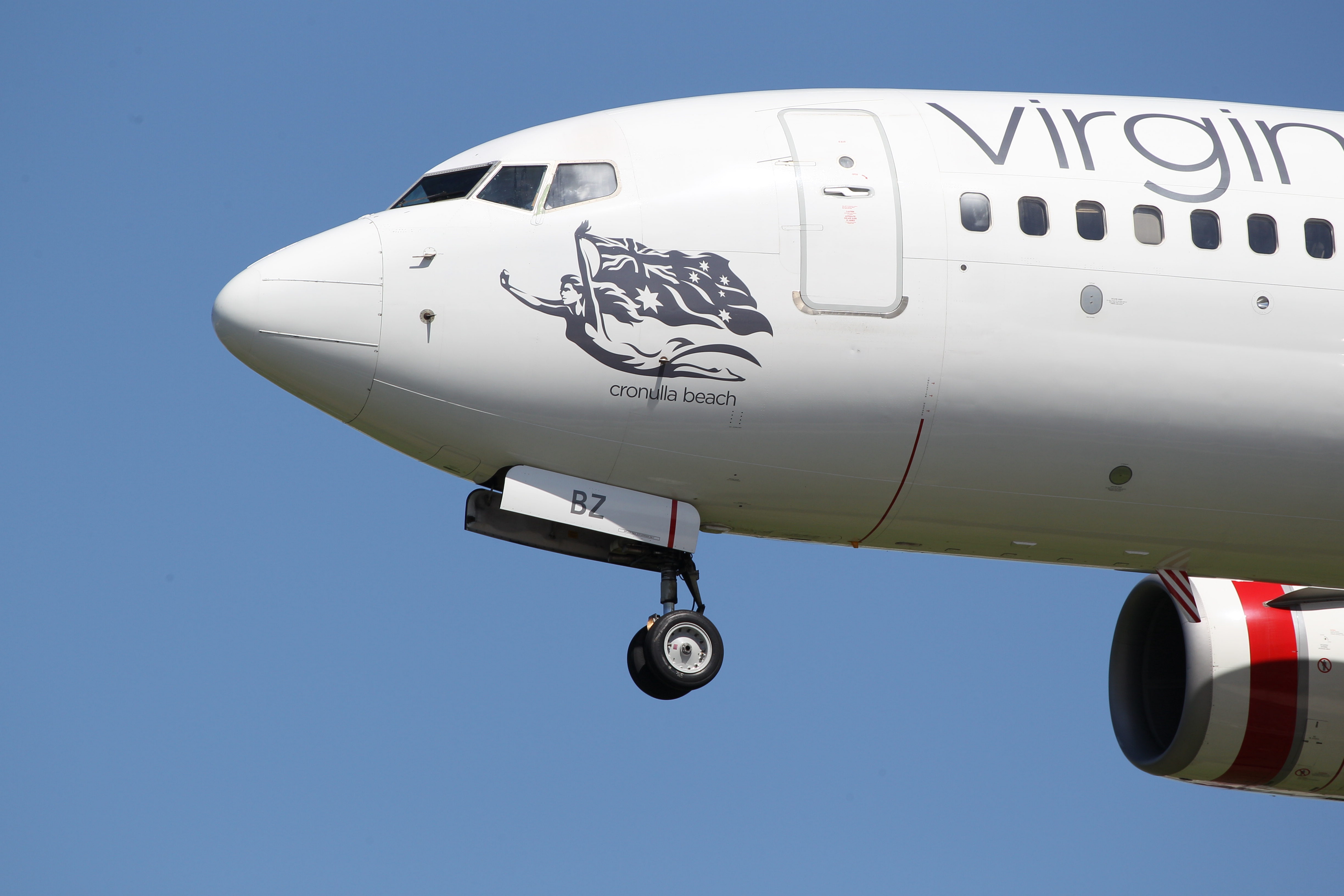 Borrowed a 1D Mark IV. JFC this camera takes no prisioner
|
|
|
|
CAT INTERCEPTOR posted:
That is so loving sharp.
|
|
|
|
CAT INTERCEPTOR posted:
 That's amazing.
|
|
|
|
At Rally Aust and Day 1....... filled 5(!) CF cards. (3 * 16Gb, 1 * 32Gb, 1* 8 GB and 1 * 4Gb half filled) I need bigger cards to handle my cameras going flat out. Also loving annoyed that some guy with a full media accreditation had to be shown by me how to take a goddamn photo. Literally had no idea what Tv was or shutter speed...... The gently caress HOW he get an official vest???? Edit : Teaser.....  CAT INTERCEPTOR fucked around with this message at 13:08 on Nov 16, 2018 |
|
|
|
CAT INTERCEPTOR posted:I need bigger cards to handle my cameras going flat out. Also loving annoyed that some guy with a full media accreditation had to be shown by me how to take a goddamn photo. Literally had no idea what Tv was or shutter speed...... The gently caress HOW he get an official vest???? He knows somebody, or was offered creds for the rights to any images he produced from some start up stock agency or something. Or possibly a small local publication that had a cred to give out. Thats usually how the hobbyists/amateurs get in anyways. Right around 2008 or so towards the end for me, Getty was buying up all the smaller agencies and offering $100 day rates (for NASCAR races) with no rights to images which is loving ludicrous, but people were knocking the doors down to get it. I knew it was getting bad when all the normal photogs i usually saw were disappearing and all these newbies that had no clue were showing up. And you know you're proper hosed when they tell you they were getting 100 day rate like they won the loving lottery, and then looked at you weird when you asked them about retention rights. One of my last jobs covering NASCAR was a favor for a friend. He was the lead photog at NASCAR scene (a publication) and they were short photogs for Daytona and he asked if I would fill in because i live close by. They usually didn't give retention rights, but they were given to me as a condition for doing the job. They put me up in a hotel with another guy THAT FLEW IN FROM NEW YORK CITY to shoot the event for creds and a hotel bed. The guy was a dentist and his hobby was motorsports photgraphy 
|
|
|
|
One time I got 2 drift cars sharp at 1/30, that's basically my only accomplishment Nikon D200 and 80-200mm f/2.8 - 125mm 1/30s f/14 ISO 100 I do find it's way easier to just let the stars align for photo composition  Nikon D70 and 70-210 f/4-5.6 - 210mm 1/320s f/5.6 ISO 800 When I want to get real depressed I just browse some actual pro portfolios like Blair Bunting or Mike Maez https://www.blairbunting.com/Automotive/thumbs https://www.mikemaez.com/
|
|
|
|
Applebees Appetizer posted:He knows somebody, or was offered creds for the rights to any images he produced from some start up stock agency or something. Or possibly a small local publication that had a cred to give out. Thats usually how the hobbyists/amateurs get in anyways. Stock agencies arent a thing at the WRC - let alone anyone who knows a drat how to photograph a rally isnt going to even think of doing work for hire unless it's a lot of money (He was keeping the photos so agency would be ruled out there). He wasnt doing for a news agency either. Realyl a big WTF as getting through the process of accreditation for a world championship event aint that easy. Still, not the first time I wondered how the gently caress someone got a media vest. Usually it's a blonde with big tits - and even more puzzling is the freeelancers who do the WRC for a living do NOT take kindy to interlopers. Long time sore point for me, given that being a legit photographer takes a lot of work to gain accreditation... and some idiot with a point and shoot has a gold level vest -_- Annnnyway - 101GB, 4682 images this weekend CAT INTERCEPTOR fucked around with this message at 09:31 on Nov 17, 2018 |
|
|
|
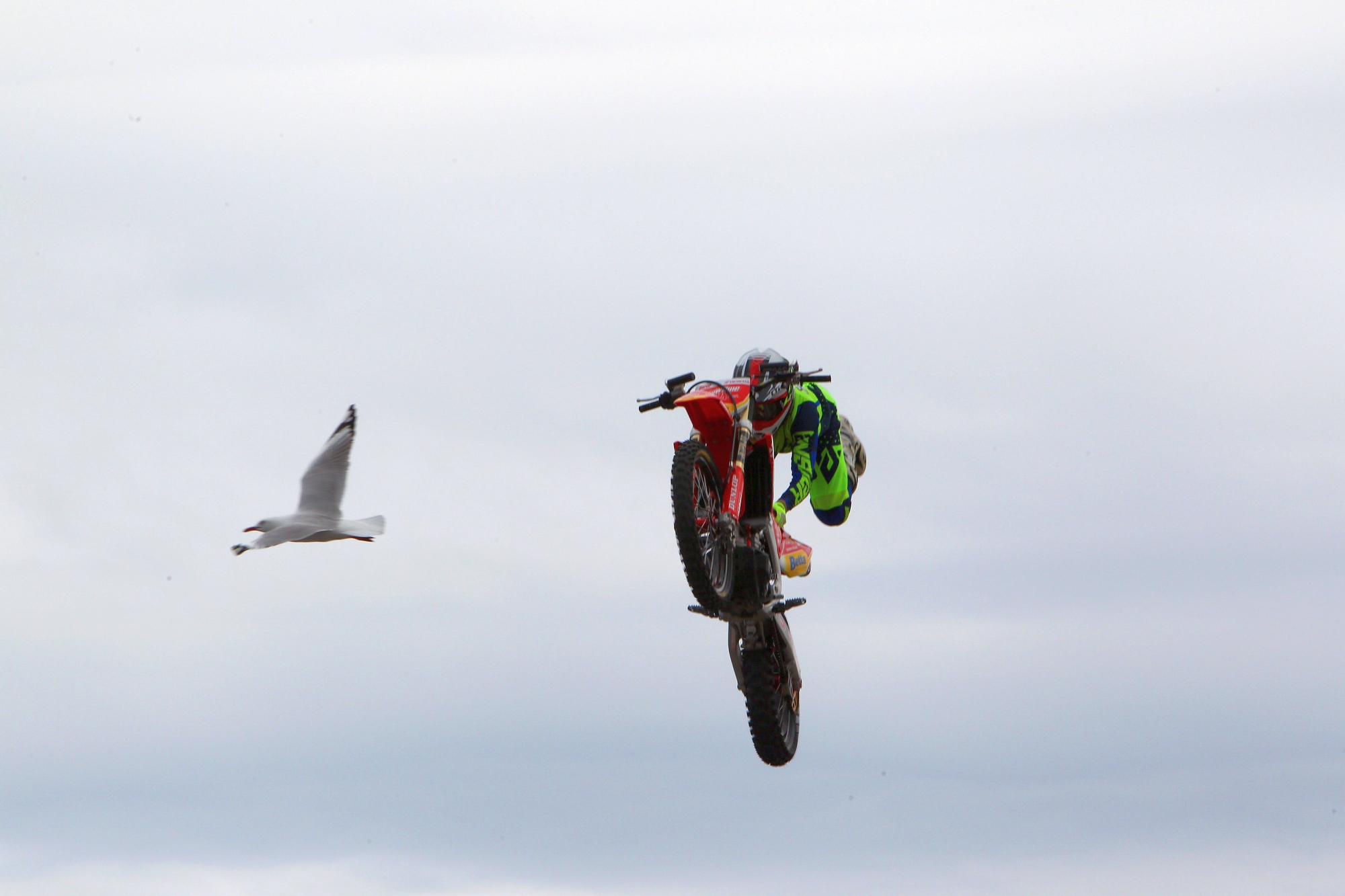 Not every photo needs to be technically competent to work......
|
|
|
|
 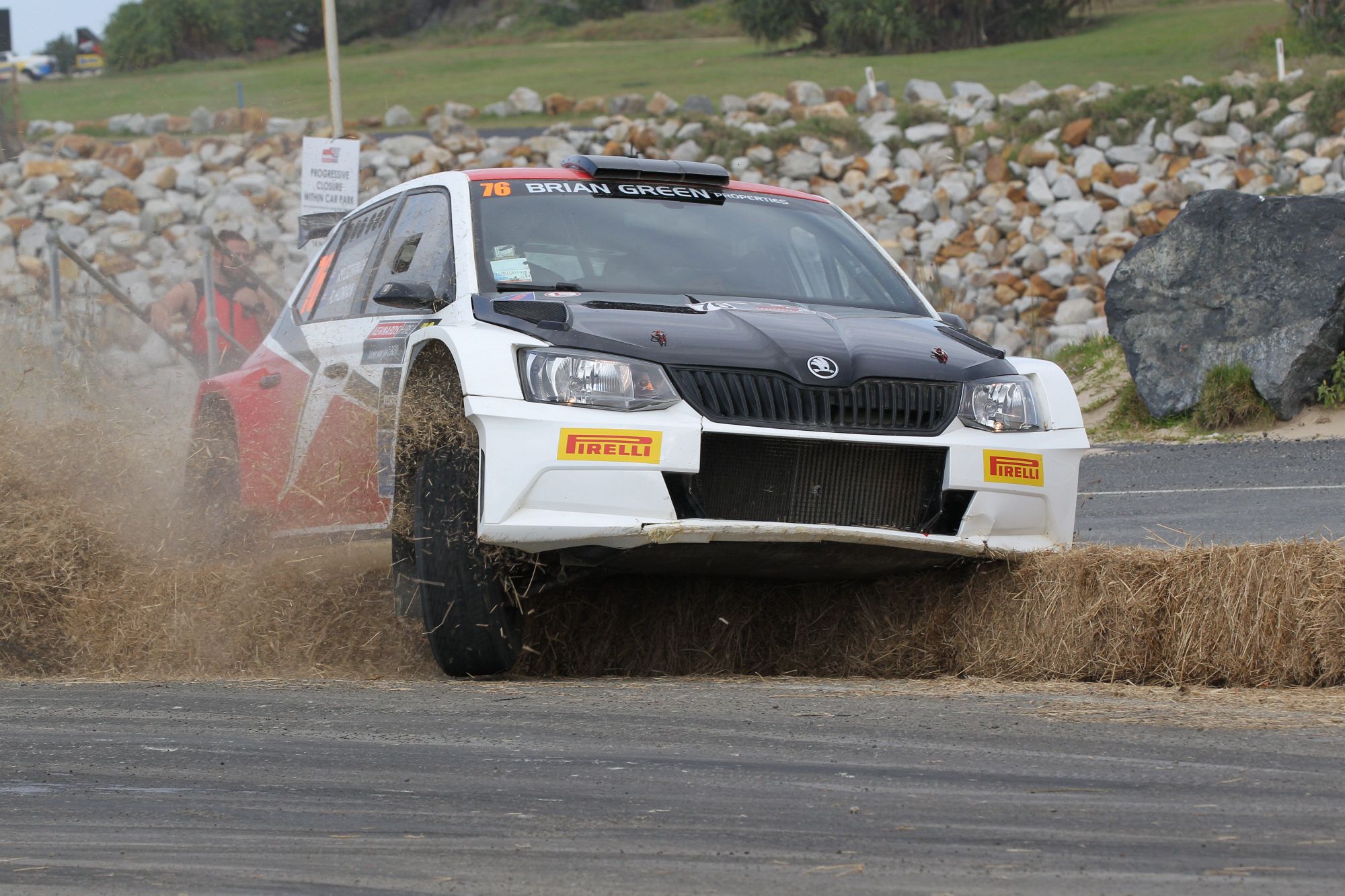 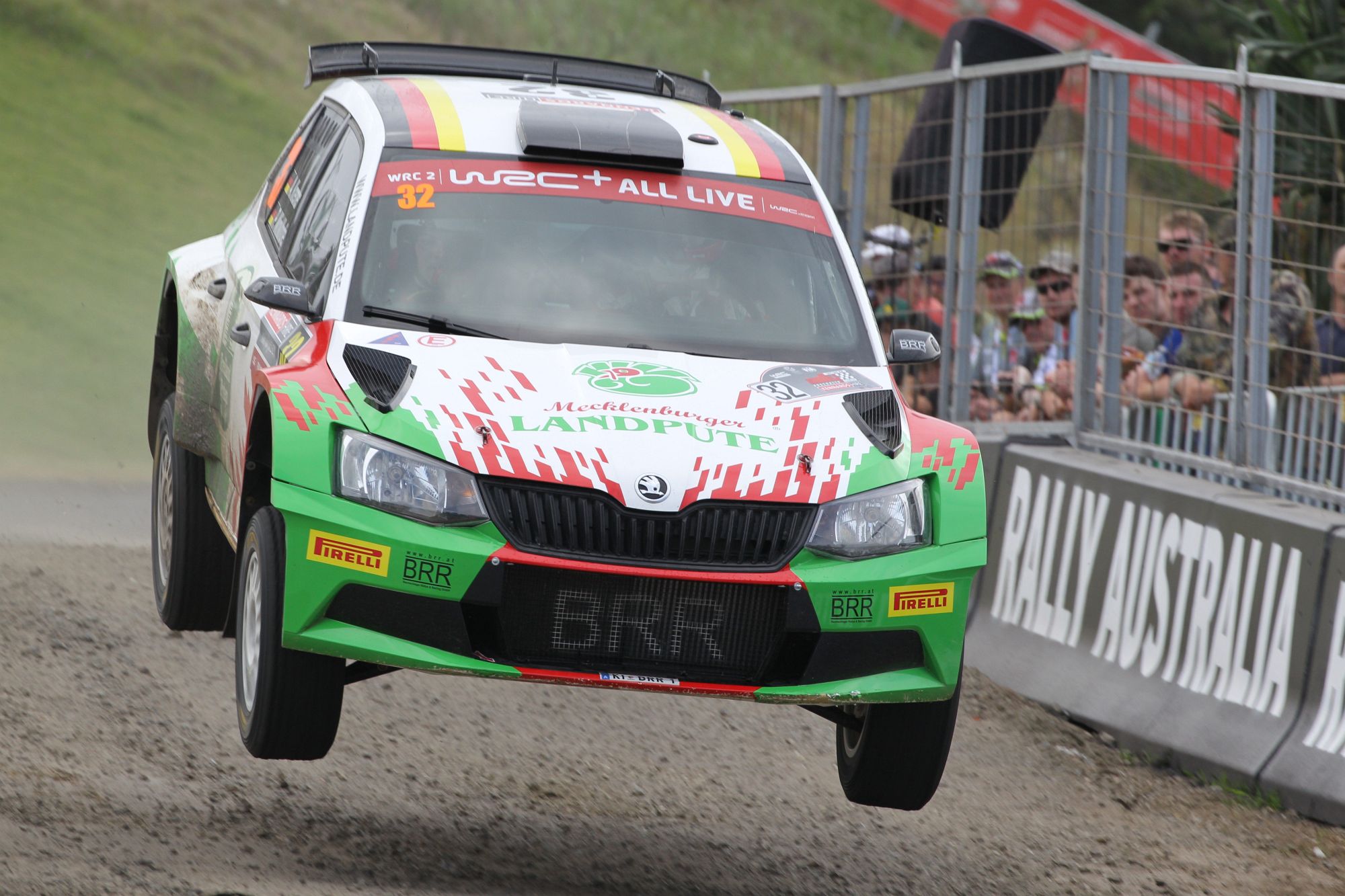 And umm.... ouch? 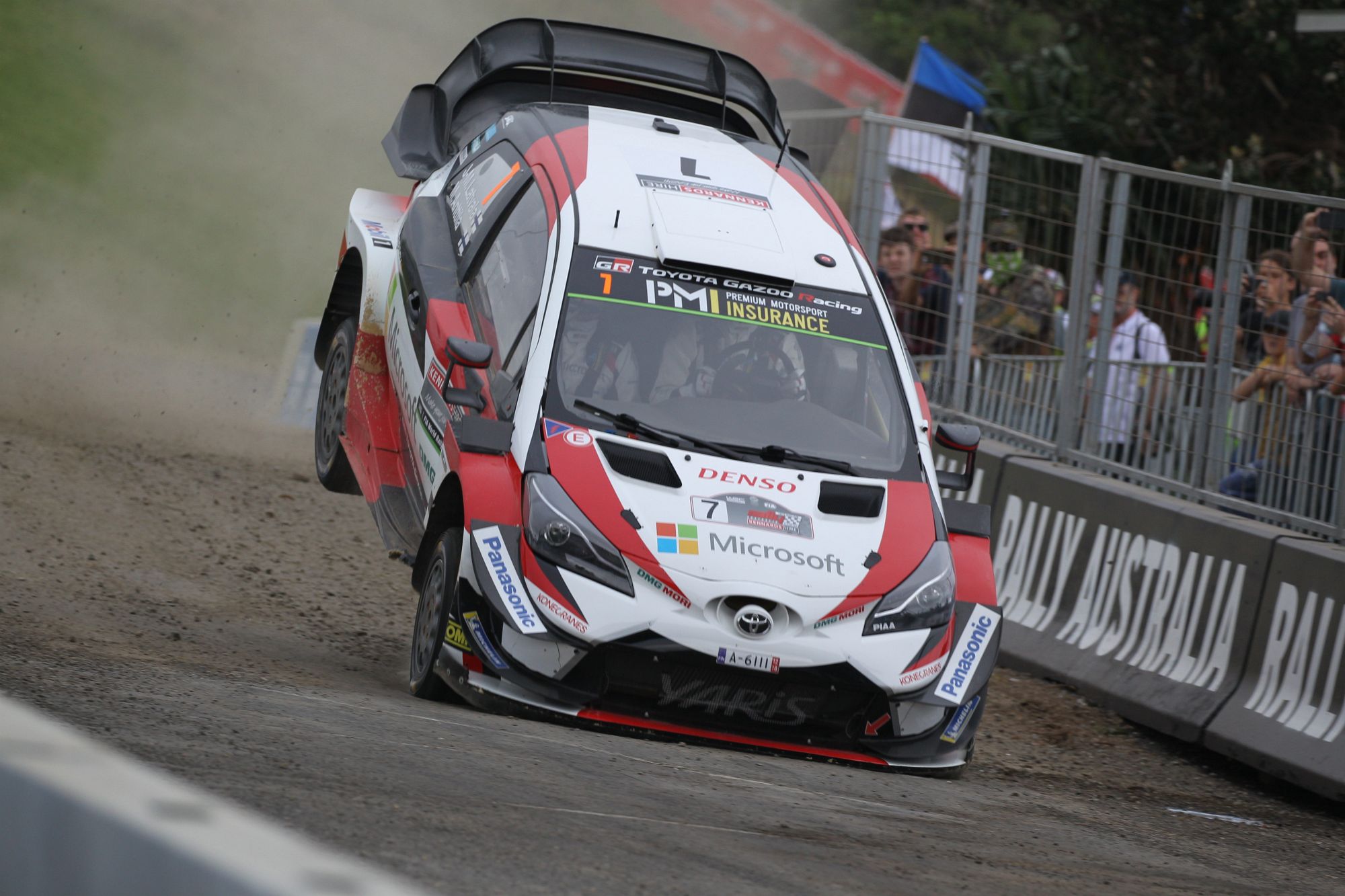
|
|
|
|
CAT INTERCEPTOR posted:
Sacrificial radiator.
|
|
|
|
WHAT THE gently caress DOES ALL THESE WORDS AND TERMS MEAN?? TBH this part of hte guide got eaten by the browser twice and I've re-written it a couple of times as I wasnt really happy with it. I *could* I suppose direct you to The Dorkroom to get a explaination of everything but I kinda found whats there.... lacking. Mostly because it still has a shtiload of jargon and wordswordswords and gently caress there is a lot to read through - even recommending books wont really work, despite there being some *really* good books on the various subjects. Let alone we're covering what is pretty much seven different threads in one. Also I personally think that despite the fact you will most likely never use film and leave it to weird twats like me..... there is a LOT of terms / techniques / words that are directly lifted from film and are applied to our digital world. Like ISO. Which makes not a goddamn lick of sense to drag from film to digital BUT when it's explained it makes a lot of sense and also is part of the first foundations of actual picture taking. And lets start there on the absolute first step. At the absolute stripped down basics, what we are doing manipulating the amount of refected light from a subject that a recording medium recieves to create a image on that medium - add sound and that is a recording of sound energy / waves. When you get down to it, that's all you are doing - and also the fancy terms and techniques are directly related to how much light / sound you record for your image... and if it's good you can booooookeh oh poo poo I just bokehed on the floor. As a note, I'll ignore things that I believe are irrelavent for Automotive or just outright mock wankery. No, film doesnt make images warmer. Only heat does. Preferably also applied to the feet of anyone that says that without irony at the same time. So that all said, we start with...... What the ever living gently caress is ISO??? ISO stands for International Standards Organisation. Really. No joke here. Thats what ISO stands for. Also it is to do with film. Annnd now you are wondering what the hell does ISO have ANYTHING to do with digital???? ISO is an industry standard for the light sensitivity and grain of film. Film itself is a medium that has light sensitive chemicals or crystals that will darken depending on how much light it recieves - ISO thence refers to the actual a) speed of the film - a higher ISO means that it takes less light to gain a proper exposure of the film, while b) grain refers to the size of crystals used - larger silver halide grains that are the chemical used in film cameras are more sensitive, hence high ISO film tends to have a grainy look, while low ISO film has smaller grains and thence a smoother look, but also requiring more light to gain a proper exposure. Before ISO became the defining standard, you had DIN and ASA standards for film just to name two. Same goes for film stock (movie film) altho different chemicals are used and film stock is often rather flammable esp the older it is. ISO was converted into a standard for digital cameras and thence is quite applicable today - instead of grain, you have noise or pixelation. Instead of silver halide, you have CCD or CMOS sensors that have set levels of light sensitivity. And thence ISO is not just a throwback to film, it's 100% applicable to you today on the latest whizzbang camera body AND because it's a properly defined standard, ISO is the same on any camera - eg ISO 400 is the same sensitivty no matter the sensor size, shape or sensor type, wether its a smart phone or a hand to hand combat camera. ISO speed is a bit of a hazy concept to apply at times because it directly depends on the amount of light you have to work with - a good sunlit day allows for a slower ISO to be used and still get the shot - and thence the sensor will be able to create an image free of pixelation or "noise" - noise being a term used to describe where the image colours break down and arent recorded faithfully (actually it's more complex than . A slow ISO doesnt allow that to happen BUT you have to have a lot of light. Fast ISO allows for an image to be taken in much lesser light at the cost of image noise. Modern cameras are able to work at much higher ISO's these days without the image degredation and the bigger the actual sensor used, the higher the ISO it can work with effectively - a small smart phone sensor simply is just too small to allow for the kind of ISO performace a APS-H or Full frame can do, just because there is just so much more light availible to hit a full frame sensor (a smart phone will try to make up for it with all sorts of software tricks but in the end, physics is physics despite what Apple or Google might try to claim, a sensor the size of a filmphile's dick is just not going to be able to work with the amount of light it can get) Is there a recommended ISO speed? Actually..... yes! For most conditions, ISO 400 is going to give great results esp with moving targets. Still targets you can drop to ISO 200 esp with good light or depending on the type of shot you want to get with action. ISO 800 is another regularly used setting esp on modern cameras where noise cancellation software comes into play you just will not notice the difference between a modern Sony A9 at ISO 800 or a older Nikon D3 at ISO 200/400. Another example is my first DLSR was a Canon 20D that had a minimum ISO of 1600 - 3200 if feature extended. 3200 was VERY noisy, while the Canon 7D mk II goes down to ISO 16000 or even ISO 51200 in H2 exprended mode and still very good at ISO 3200. A Canon 1D Mark IV can drop to ISO 102400. The king of low light shooting the Nikon D5 goes to ISO 3280000(!) in expanded mode and will do very good images at ridiculous ISO settings. So I've mentioned sensors a few times. What IS this sensor you talk about? The device that registers the photons that strike it's surface and "converts" them to electrons. As I said earlier, imagery is all about capturing light and this is the device on a digital camera that does the job. Shutters, apetures, ISO.... that all detirmines how much light the sensor gets to work with but the sensor int he end does the actual capture work. Now there's more than just these tow types I'll discuss but I doubt you'll see anything else so lets stick with that CCD - Charge Coupled Device, usually for video cameras https://en.wikipedia.org/wiki/Charge-coupled_device CMOS (or APS... yep thats what APS stands for in crop cameras) - Complementary metaloxide semiconductor, usually for still cameras https://en.wikipedia.org/wiki/Active_pixel_sensor https://en.wikipedia.org/wiki/Image_sensor#CCD_vs_CMOS_technology quote:Cameras integrated in small consumer products generally use CMOS sensors, which are usually cheaper and have lower power consumption in battery powered devices than CCDs.[2] CCD sensors are used for high end broadcast quality video cameras, and (C)MOS sensors dominate in still photography and consumer goods where overall cost is a major concern. Both types of sensor accomplish the same task of capturing light and converting it into electrical signals. Good video cameras are 3CCD devices - one CCD per primary colour. You DO pay for that tho. Shutter This is a term that also might seem a bit odd as it too is a term that pertains to film cameras and doesnt really seem to have a place in digital. But just like ISO it certainly does have a place. In film cameras, the shutter prevents any light from striking the exposure medium. When you depress the button on a camera or begin to roll on a film video camera, the shutter opens and the film gets exposed for however long the shutter remains open for. Film video is for many MANY years has been 24 frames a second or 1/24 and uses a rotary shutter. Film cameras mostly use a sliding shutter like so - https://www.youtube.com/watch?v=PJ3WTW0DvOk Leaf shutters also are used. Digital of course does not have this and doesnt need it. So what we have instead is the amount of time the sensor is receptive to light irrespective of whatever system your camera is - mirrorless or DLSR LIve View are two primary examples of no pysical shutter or other light blocking mechanism (like DSLR's reflex mirror) in play. And of course shutter speed is simply the time the sensor is receptive to light. The longer the shutter time, the more light the sensor can recieve. Pretty simple concept, not so easy to get right. Recommended - base your imagery mostly off shutter speed especially action. On a normal camera this is Shutter Priority or Time Value (Tv). Depending on what I want and at what direction cars are coming from, I'll work between 1/40 second to 1/640 second shutter speed. High shutter speeds will freeze the action and be easier to create sharp pictures but also said images more likely to look lifeless. Slower shutter speeds will add more blur and appearence of motion.... but also blur your subject more unless you have the technique to do things like this - 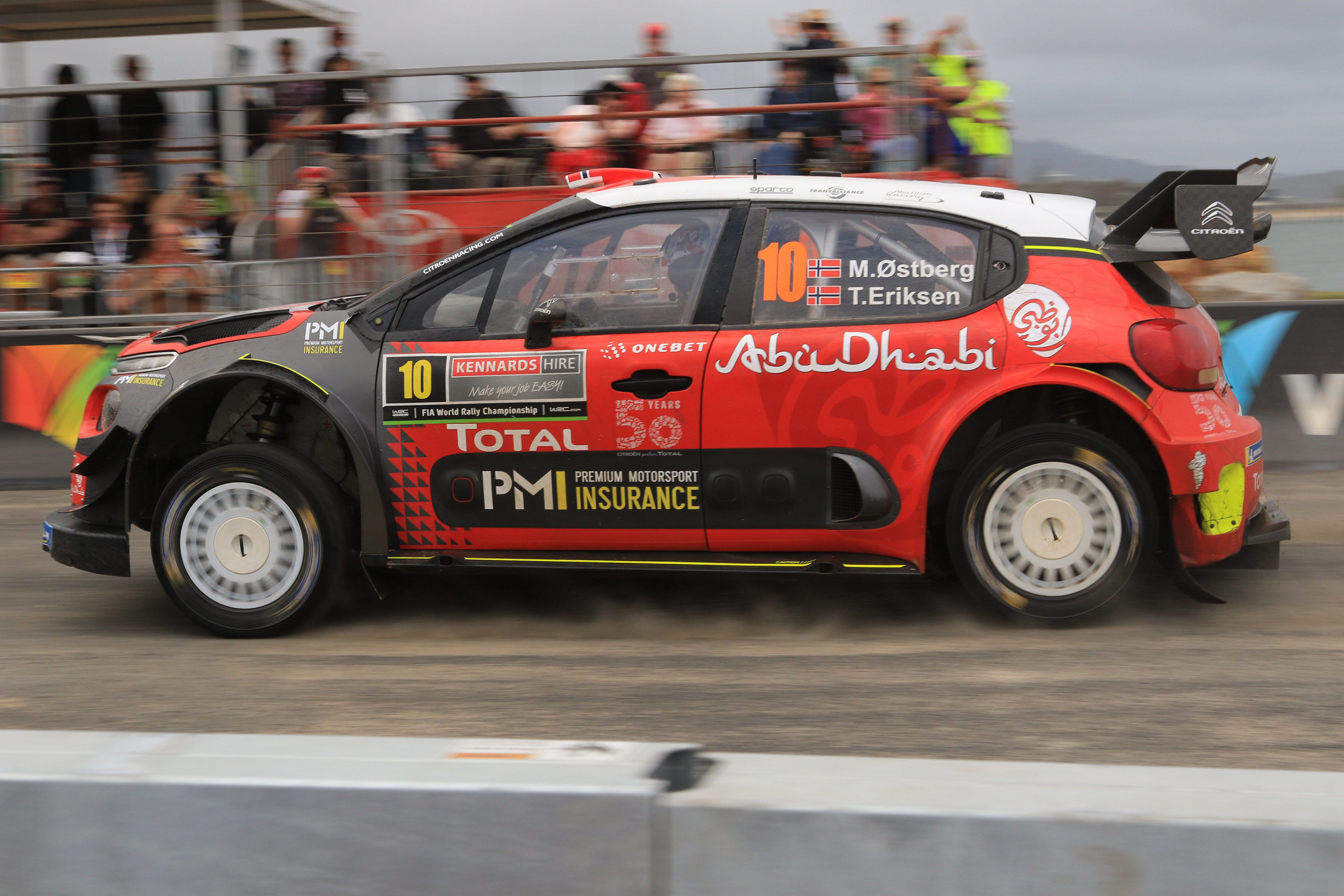  This is achieved by panning - which is def a item for further discussion as this often is your payday technique. Aperture This basically without getting too camera nerdy is the size of the hole that lets in light through a camera lens. A large aperture lets in a lot of light, smaller apertures of course lets in less light. Usually denoted as f-x.x - a large aperture makes the whole camera work faster due to the amount of light it can work with and hence why a lens with a low f number is called a "fast" lens. Lenses usually will have a physical aperture leaf that wil open and close depending on how much light the camera thinks it needs to work with for the other settings. Aperture also controls your depth of field and is the Av (Aperture Value) priority setting if you want to fix a aperture size. So if you want to get camera nerdy - https://en.wikipedia.org/wiki/Aperture#In_photography quote:The aperture stop of a photographic lens can be adjusted to control the amount of light reaching the film or image sensor. In combination with variation of shutter speed, the aperture size will regulate the film's or image sensor's degree of exposure to light. Typically, a fast shutter will require a larger aperture to ensure sufficient light exposure, and a slow shutter will require a smaller aperture to avoid excessive exposure. Also read the rest of the article for a good rundown Typical ranges of apertures used in photography are about f/2.8–f/22 or f/2–f/16,[5] covering 6 stops, which may be divided into wide, middle, and narrow of 2 stops each, roughly (using round numbers) f/2–f/4, f/4–f/8, and f/8–f/16 or (for a slower lens) f/2.8–f/5.6, f/5.6–f/11, and f/11–f/22. These are not sharp divisions, and ranges for specific lenses vary. [/quote] https://en.wikipedia.org/wiki/F-number - the maths behind f-stops Stop While this is 100% related to aperture, it deserves it's own mini paragraph as it's smething you hear a lot badied about. 1 stop means halving the amount of light recieved by the sensor ie a f-stop of 1.4 is twice the ligot of a f-stop of 2 and that is twice that of f2.8 (one quarter of f1.4) Depth of field The area of the image that is in focus. A small f number will result in a small area (measured in distance) from you that will present as in focus. Anything outside of that will be blurry. So lets say the car is coming past you at about 10 meters distance - a small f number will have say one sode of the car clear but the back half blurred as well as the background, while a larger f-number will have the entire car clear and also some of the background if the number is large enough.  So for examle - my point of focus is the windscreen, which means the nose of the car is slightly blurry, the main body is sharp with blur starting to return at the rear. f5.6, shutter 1/400, ISO 400 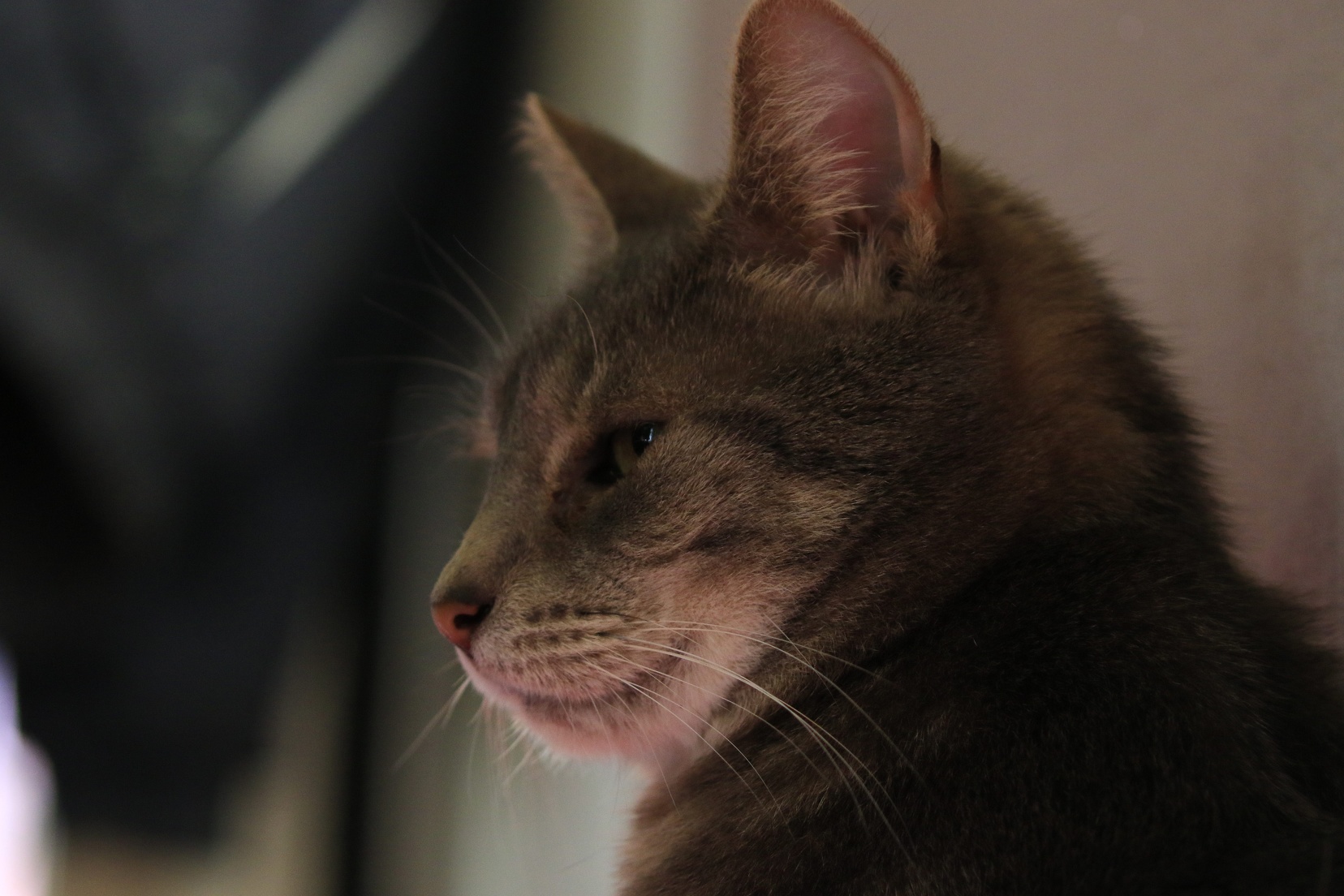 f4 for this one. Aperture is a good one to use to play with how the image comes out and to coem upw ith different effects in-camera BOKEH Japanese for blur and English for "The person using this term is a loving wanker that deserves to be beaten up using a 7D Mk II". It's used by asshats to describe the quality of the blur outside of the depth of field that is utterly subjective. What is not subective is anyone at a automotive event using this term without irony is a flannel wearing, vaping twat biscuit and should be avoided at all costs. Luckily, the first sign of tyre smoke or dust and they are gone. Often mocked greatly by my favorite camera Youtube channel Kai W. Okay look in fairness the blur outside of depth of field may affect the quality of your image but frankly dont worry about it - it's 100% subjective NOT objective. I've never looked at one of my photos and gone "hhhhhh yes thats a really creamy blur there" and frankly unless you are deliberatly going for a shot where blur enhances it (like below), who cares? White Balance Pretty simple term - just basically the adjustment required to make colours look more natural. https://photographylife.com/what-is-white-balance https://photographylife.com/what-is-white-balance quote:Simply put, white balance in digital photography means adjusting colors so that the image looks more natural. We go through the process of adjusting colors to primarily get rid of color casts, in order to match the picture with what we saw when we took it. Why do we have to do this? Because most light sources (the sun, light bulbs, flashlights, etc) do not emit purely white color and have a certain “color temperature“. The human brain processes the information that comes from our eyes and automatically adjusts the color temperature, so we normally see the colors correctly. If you took a white sheet of paper and looked at it outside, it would most likely look as white as if you were to look at it indoors. What most people do not realize, however, is that there is a huge difference in color temperature between bright sunlight and indoors tungsten light. Also of note.... quote:Most current DSLR and point and shoot cameras have white balance presets that are set to a certain Kelvin number by the manufacturer. These presets also vary depending on the manufacturer and camera model. Here is the list of presets for most Nikon DSLR cameras: Admittedly this is something a lot of us will suffer issues with but as long as you are shooting in RAW format, easily fixed in post. Also specifically for me in Australia, sunlight tends to be harsher and thence images tend to look a bit washed out so I will compensate for that to get the colours more pronounced. RAW A RAW file is what the camera actually sensed with minimal processing. These are not directly usable as images themselves, they require post production conversion. However they are what you need to allow for post processing - the values of the image can be manipulated greatly in this format. Thence if you underexposed, you can in post correct the exposure. Or if the white balance is off, it can be adjusted. These files are normally quite large - anything up to 35mb depending on the megapixel of the sensor - https://en.wikipedia.org/wiki/List_of_sensors_used_in_digital_cameras is a good bit of reading on the various sizes used. Note that the megapixel race is well and truly over, you just dont need more than whats on offer these days and even then thats mostly overkill. Also overly bigh megapixel density is NOT a good thing esp at low light so thence the camera manufacturers pretty much settled at 20-25megapixels - 10 megapixels will still give you insanely good blown up images if your sensor is large. Tiny sensor high density smart phone pixel counts isnt a good thing ... and even then, those have stopped growing in count now too. It is recommended that you shoot in large RAW for best results and also best ability to post production. JPEG is of course a image that is the result of post production / conversion. Cameras can write in this format but what you get is what you get, post is very limited. Next - more terms and we we'll dive into things like AI SERVO and auto focus which is the heart of getting sharp images - you can have the best glass and cameras but if your camera dont focus right, your poo poo out of luck or producing BOKEHHHHHHHH spank banks. CAT INTERCEPTOR fucked around with this message at 14:07 on Nov 23, 2018 |
|
|
|
Great thread, thanks for putting it together. I'm not very good at either cars or cameras, but I do like to point one at the other and push buttons sometimes. A few from "autocross" events several years ago. Kart tracks make good racetracks for cars. 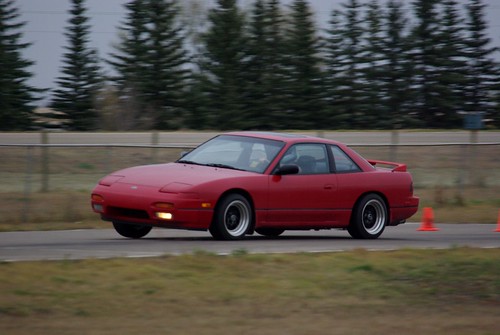 240SX 2 by Martin Brummell, on Flickr 240SX 2 by Martin Brummell, on FlickrTripod Mode 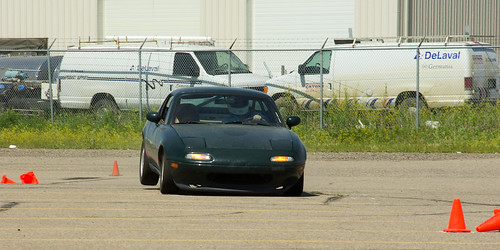 05 Miata 2 by Martin Brummell, on Flickr 05 Miata 2 by Martin Brummell, on FlickrTwo wheels up (and annoyingly slightly out of focus) 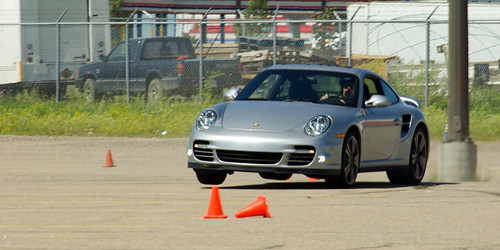 16 Porsche 911 3 by Martin Brummell, on Flickr 16 Porsche 911 3 by Martin Brummell, on Flickr"You killed Kenny!" is my tag for photos showing a car hitting a cone. 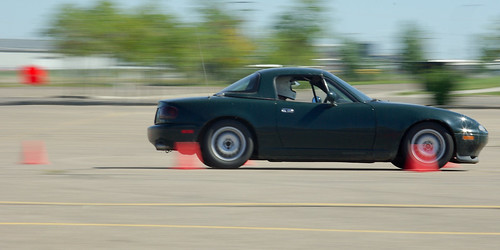 SSCC Superslalom 110821 Miata 4 by Martin Brummell, on Flickr SSCC Superslalom 110821 Miata 4 by Martin Brummell, on FlickrNot a car, but one of my favourites where I managed to pan the subject effectively. I skimmed the thread, have you talked about panning shots yet? 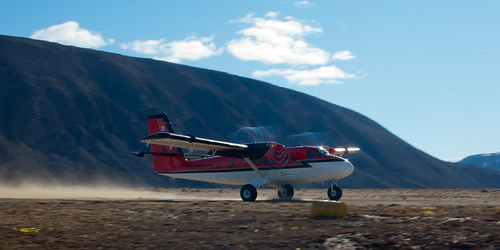 Professors Depart 5 by Martin Brummell, on Flickr Professors Depart 5 by Martin Brummell, on FlickrAnd a static shot on film just because. 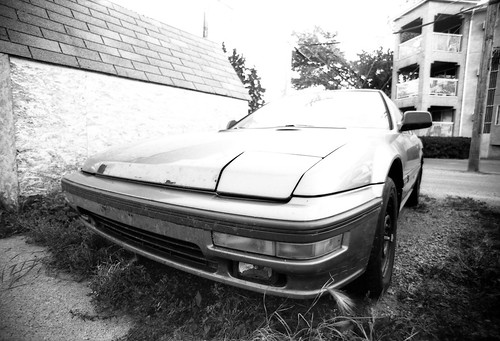 Kodak Tech Pan 25 1 032 by Martin Brummell, on Flickr Kodak Tech Pan 25 1 032 by Martin Brummell, on Flickr
|
|
|
|
Is there going to be a section in here about overly processing an image or just plain overcontrasting? Both make a shot look amateurish. Like this bullshit here. Contrast up, sharpness up, vignette... it just looks pap.  There's the technical side of photography that pretty much anyone can learn but there's also the artistic side and knowing when less is more.
|
|
|
|
That actually looks pretty cool in a novelty sort of way, like it would make a cool poster or something. I like it for what it is, an over processed image made to look flashy 
|
|
|
|
Huh, that's an image I wouldn't pay any attention to were it not in this thread- the car is completely lost to the vignetting. Now that I'm actually looking at it, the inconsistency of the lazy dodge work (or is the entire vignette just a ham-handed burn?) on the corners of the roofline and the horizon is starting to get the corner of my eye twitching. The sky is so... blotchy, I guess, that my eyes don't know what to do with it- it's like looking at that image of the woman with four eyes.
|
|
|
|
Yeah it's not the greatest job, but I get the idea. Someone that's really good (more creative) with photoshop could make it better I'm sure.
|
|
|
|
ExecuDork posted:
Panning - not yet, but I am intending to. Possibly next post or the one after, I want to do some more "This is your settings and custom functions" explainations next as well which will include more on light metering / exposure balance / White balance, Auto focus settings and use and good custom functions (which also mostly relate to auto focus) Olympic Mathlete posted:Is there going to be a section in here about overly processing an image or just plain overcontrasting? Both make a shot look amateurish. It looks passable at a glance ... but yeah it REALLY doesnt stand up to scrutiny. Incoming mockery on HDR abuse Applebees Appetizer posted:Yeah it's not the greatest job, but I get the idea. Someone that's really good (more creative) with photoshop could make it better I'm sure. The base photo itself would have been pretty good tho so...... okay yeah art is subjective and HDR gets a bum rap due to abuse and overuse but really, he should have left it alone or just saturated the colours a bit.
|
|
|
|
Before I get into the nexy major point, just to clear up one confusing thing. What the hell is a crop camera and what does that mean? A crop camera is simply one that has smaller sensor than that of a full frame ie, 4/3rds, APS-C, APS-H. It's usually used in place of APS-C, being the overwhelming majority of crop body cameras. APS-H is rarely called a crop camera mostly due to the fact it's only used in a pro body camera, but any 1D with a APS-H IS still a crop camera. So why are they called crop? Basically because you get a tighter framing of your subject. The best way to explain is to show in this case and I'll go.... something I've already posted.  Lets call this what we see through the viewfinder of a a full frame camera. It's not exactly framing the subject too tightly is it? So what happens if we remove from the field of view the excess space around the subject....  We have "Cropped" or removed from the field of view all around hte subject and tightened the view to remove elements not needed and to also give us the illusion of being closer. Now I will have to admit I struggled to grasp that we are NOT magnifying, nor are we really changing focal lengths or any of the other explainations for what a crop camera is that you can read - it due to the fact there IS so much wrongly explained about crop cameras and their effects on field of view. So lets be clear here - we are not actually any closer, the image will not be magnified, the focal lengths havent magically gotten longer. We have just simply cropped out about 30-40% of the field of view around the outside and drawn the field of view tighter into the subject. But we DO have illusion of being closer to the action - like this  I'm close to 50 meters away, looking down about 5 meters above the car - I have NOT done any cropping in post, this is how it came out of the camera. If I had a full frame camera for this, you'ld see the road around and a bit of the bank I was on but because this is a crop body, it's field of view is narrower and so thats just not captured. But I dont look like I'm 50 meters away does it? I have the illusion of being closer jusst because my framing is tighter and I have framed my target so that's really all there is and all you can see is not how poo poo the spectactor point was but a green large V8 Commodore oversteering and throwing gravel. 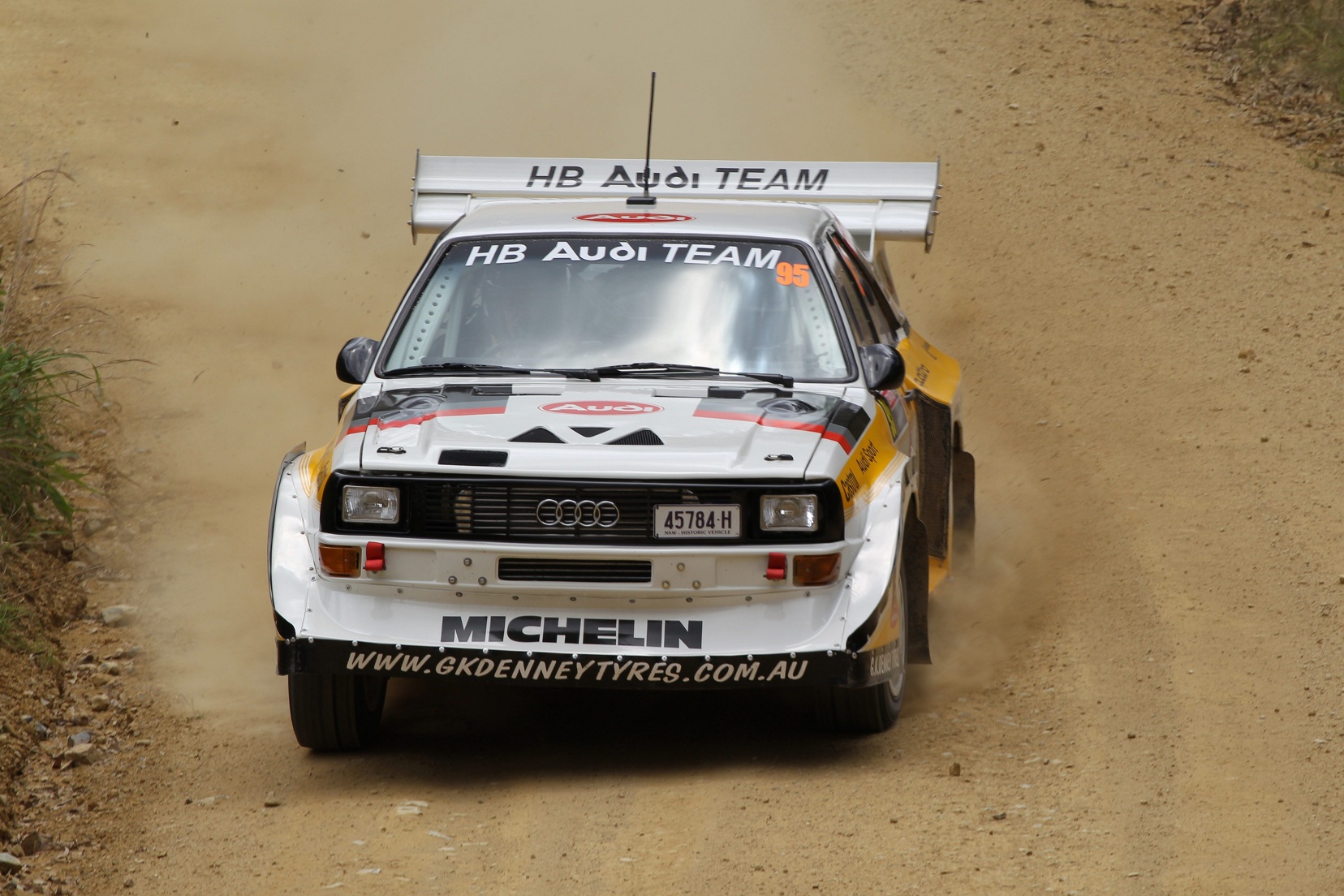 Again, another example of framing but this time I wasnt quite as tight. Still, with a full frame there would be a 30% more all round the image and it would make you feel further away. The issues of framing and not getting dangerously close is why telephoto lenses are recommended. Also while a full frame typically gives a better portrait, crop cameras frame the action better - this is why a Nikon D500 or a Canon 7D mk II is almost always part of a pro's camera gear, despite them having a Nikon D5, Sony A9 or Canon 1D as well. And if you want to introduce more into the frame around the car? Dont zoom in as much. In the end I've never felt the need for a wider framing when taking images, I've always wanted to tighten my framing so...... if you only can have one camera body, I'd recommend a crop body just simply because of this. Thats not the only reason tho. The next one is also a good one - crop body camera tend to do this better if all things are otherwise equal - and the Nikon D850 and Canon 7D mk II is truly amazing for this reason. FOCUS (Please note the following is very much skewed to equipment I use. General principles apply but the terms used and actual setting labels may be quite different) So we have our camera body, we have lenses, we have an idea how to use the light availible to get a nice full colour image... but it's blurry and looks like poo poo! It's out of focus of course so here's in all honestly the first real meat and bones about getting that good image that is sharp and awesome. So you unbox your camera you read about focusing and oh god what the gently caress what the ehll did I just read what are all these menu options what on earth have you gotten yourself in for? You're not wrong. It IS extensive as hell. It IS complex. But lets break it down. a) - Manual Focus As it says on the box. Switch to this mode and you're doing it all yourself. Theere are two rings on a lens - one controls your zoom, the other is your focus. Swithc the lens to manual focus, twist one of the rings until you either get more blur or things suddenly pop up sharp..... and there you are. It's that simple. But of course.... you REALLY dont want this unless you are going to be fixing on one spot only or doing automotive still shots. But hey, if you want to play with manual focus, go right ahead and I'd recommend going full manual for some test stuff to get a feel for what a good focus is - there are some pros that operate in this mode almost solely and they get incredily crisp shots. And you know..... in the end this CAN give the best results. It's a loving difficult art to master tho but just try anyway. Also most likely to be on older film cameras of various kinds. b) - Auto Focus or AF This is a biiiig and important subject. As much as manual focus is cool and froody, auto focus is your primary tool to create crisp images so understanding what it is and how the settings change how it works is important. The higher level a camera is, the more modes it will give you until (Oh and yeah of COURSE a 7D mk II is here somewhere, it's AF is pretty much the best outside of Nikon D5) you have focus modes for basically whatever challenge you might come across that would normally foul up AF... and then modes / features drop away as the full pro level cameras do not hold your hand but on the other hand, the full pro bodies have AF speed and AF focus point options that work better. A lower end camera's AF might get in your way, which a full pro camera doesnt - it'll do exactly what you tell it you want and then deliver. i) Basic AF modes One Shot - This mode is best for still and not moving objects. The focus is obtained with a half press of the shutter button and then is locked. You can only reaccquire focus buy doing another half button press buuuut.... with focus locked you can recompose the shot if you so wish. Focus lock is signified by a beep and your focus area lighting up inthe viewfinder AI Focus - An extention of One Shot, but the difference being if the subject moves, the focus will track and adjust. Hand for say subjects that begin to move or move slowly. Focus is NOT locked, focus area will flash when focus achieved. AI Servo - The camera is presuming the subject is moving and acts accordingly. It will track the subject and make a "intelligent" assumption where the focus will be when the button is depressed - thence if you have your shutter set to 1/250, it'll be focusing for that particular shutter speed and where it works out the subject will best be in focus as a result. Cameras with AI Servo mode usually have a seperate processor to do this calculation. This is your recommended AF mode - what it's called on your camera may be different, on Nikon it's called CF or Continuous Focus. To be honest, I dont really see much of a need to use any other focus mode and it's the one to use for action. Part II coming up - Focus zones, focus point types and a basic rundown of how this all helps. CAT INTERCEPTOR fucked around with this message at 20:36 on Nov 28, 2018 |
|
|
|
glyph posted:Huh, that's an image I wouldn't pay any attention to were it not in this thread- the car is completely lost to the vignetting. Now that I'm actually looking at it, the inconsistency of the lazy dodge work (or is the entire vignette just a ham-handed burn?) on the corners of the roofline and the horizon is starting to get the corner of my eye twitching. It’s real bad in so many ways, that there’s people suggesting it’s not bad in a photography thread has me a little concerned if I’m honest 
|
|
|
|
Minor nitpic, Cat - D850 isn't the crop sensor body, D850 is the 5D-esque slower full frame one. D500 and D7500 are the fast Nikon crop sensor bodies.
|
|
|
|
Olympic Mathlete posted:It’s real bad in so many ways, that there’s people suggesting it’s not bad in a photography thread has me a little concerned if I’m honest Well to be fair, at that point it's not really a photograph anymore, so like CT said subjective art and all that. I've seen some really cool HDR stuff, I like it when it's done well 
|
|
|
|
mekilljoydammit posted:Minor nitpic, Cat - D850 isn't the crop sensor body, D850 is the 5D-esque slower full frame one. D500 and D7500 are the fast Nikon crop sensor bodies. Ooops / edited. D850 is a FX format, D500 and 7500 are DX (FX = full frame, DX = Crop) Okay so as an aside on lenses because the Nikon range doesn't seem to be as straightforward as Canon - Canon has three ranges - EF, EF-S and EF-M. EF is the standard mount that works with any DSLR, EF-S are specifically for crop, M is mirrorless. Nikon appears to be Z for Mirrorless, FX for full frame and DX for Crop? Canon then have three general levels - kits, STM (Stepper motor) and L so it's resonably easy to distinguish what lens sits on the top of the pile... but with Nikon there doesnt really seem to be that distinction other than ED? TBH, Sony are easier to figure out, they are copying the branding of Canon. You have E and A mounts (A-Mount being the old Konica Minolta that Sony kept when they bought the camera business, E being newer and must be used with electronic viewfinder), then the regular, ZEISS and G being their equiv of Canon L-Glass
|
|
|
|

|
| # ? May 7, 2024 08:52 |
|
Yeah, Nikon doesn't have a quick and dirty distinction like that; they have a variety of alphabet soup denoting specific features (ED, N, FL, autofocus type, etc) and the better ones have a gold band near the end but they totally missed a marketing trick there.
|
|
|







 EVERYWHERE
EVERYWHERE 







